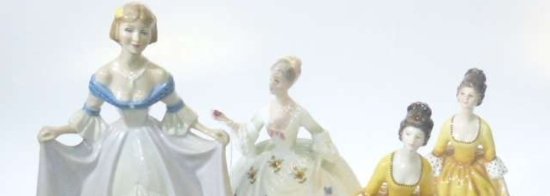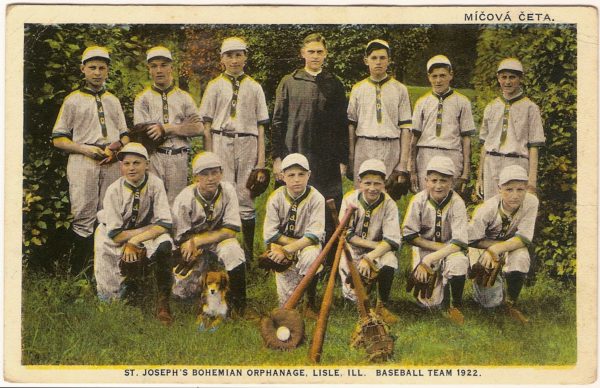Americaís 20th century, especially the first half of it, was witness to an amazing assortment of children’s books which are treasured today. Some like Raggedy Ann and The Wizard of Oz rather rapidly reached legendary status among collectors, but many other titles with charming prose and striking illustrations have slowly become collectable.
Children were treated to the Wonderful Wizard of Oz right from the beginning of the new century in 1900. Three years later the Bobbs-Merrill Company used the original plates of the Geo. Hill Company to produce still another version.
Today the Hill edition is the most highly prized, but the Bobbs-Merrill issues are also quite desirable. And there were plenty of other choice children’s books in the early 1900s, too.
Alice of Old Vincennes, Rebecca of Sunnybrook Farm, North American Fairy Tales, The Owl and The Wood Chuck, and The Story of Simple Simon were examples of the flood of new titles.
“Childhood became, during this decade, a popular consumer trend,” observes Harold Darling the author of From Mother Goose to Dr.Seuss by Chronicle Books. “There were more juvenile books published than ever before, and as demand increased, publishers were willing to take chances with a wider and stranger range of subjects and styles of illustration.”
While many of the latter-19th-century books for children had stressed learning and moral issues, the dawn of the “new century” saw more emphasis on enjoyment and even entertainment. For example Frank Baum who authored The Wizard of Oz, rushed to do a host of other exciting books including American Fairy Tales, Mother Goose in Prose, and Father Goose. The talented illustrator of the Oz book, W.W. Denslow did the same including Animal Fair, Denslow’s Mother Goose, and The Big Circus Book.
In England one of the major producers of children’s books in the early 1900s was Raphael Tuck and Sons. In 1903 Tuck’s The Railway ABC was a major success. Equally popular in the years that immediately followed were Father Tuck’s Annuals which were filled with appealing stories, poems, and illustrations.
Vast variety continued in the United States as well in the early 1900s with selections like Hickory Limb with illustrations by Rose O’Neill, The True Story of Humpty Dumpty by Anna Alice Chapin, and Boy’s Ride written by Gulielma Zollinger with illustrations by Fanny Chambers.
During the second decade of the 20th century, especially by the end of World War I, America had gradually assumed a leadership role in the publishing of children’s books. In 1920 fabled Raggedy Ann and Andy creator Johnny Gruelle provided illustrations for Bam Bam Clock written by J.P. McEvoy. The book was published by P.F. Volland of Chicago, a major contributor to the market of children’s books.
Elsewhere children of the 1920s were treated to the likes of Cook and the Captain Bold by Arthur Mason; Ward, Lock and Company’s Wonder Book; The Bluebell Story Book written and illustrated by Cicely Barker; and The Story of a Happy Doll written by Lurline Mayol and illustrated by Fern Bisel Peat. (Peat went on to become a major illustrator for toys of the Ohio Art Company.)
Despite the economic hardships of the Great Depression during the 1930s, the selections of children’s books remained richly rewarding for young minds. Among them were Doris and the Trolls by F. Atwater, Little Brown Bear by Anne Gage, Freddy the Detective by Walter Brooks, The Adventures of Mickey Mouse, and Cowboys of America designed and illustrated by Sanford Tousey for Rand, McNally and Company.
In 1939 another milestone in children’s books was reached when family members of the late Johnny Gruelle formed the Gruelle Company to re-publish some of the earlier Raggedy Ann books. The new company used original plates from the Donohue Company and copyrights from the Volland Company to accomplish the task.
The winds of war during the 1940s had a limiting effect on the quality and variety of childrenís books. Books like Belinda Balloon and the Big Wind by Elizabeth Honnes and Town Mouse and the Country Mouse by Ethel Hays retained much of the essence of earlier books. However many others, such as Childhood’s Best Loved Book suffered from national shortages including fine paper.
Whitman Publishing remained a major producer of children’s adventure books during the 1940s and beyond, although their pulp paper issues often did not do justice to their striking illustrations. Among the competition were Saalfeld Publishing Company, M.A. Donohue and Company, Triangle Books, A.L. Burt Company, Cupples and Leon Company, and Gossett & Dunlap which specialized in reprinting the titles of many other leading book publishers.
In general terms the “army” of children’s book publishers was unable to achieve during the second half of the 20th century what that had been collectively provided during the first half. “After 1950,” note Diane and Rosemary Jones authors of the two-volume Collector’s Guide to Children’s Books, ìthe quality of printing dropped as children’s books entered a rather dull era marked by good writing, but little or no illustration.
And illustrations are very important to todayís collectors. Often the work of better-known artists in children’s books is sought as strongly, if not more so, than by authors.
Interestingly while leading artists of the day were used in the early editions of a particular children’s book, later editions sometimes featured entirely different artists. In some cases the second-level of artists later went on to serious acclaim. Reprint specialists Gossett and Dunlap, for example, used the art of Charles Livingston Bull who went on to become one of the major military poster artists of his time.
Condition, of course, is also important to collectors of children’s books. “The more enjoyed a child’s book has been during its lifetime, the less likely it is to have survived, notes antiques expert and author Anthony Curtis. ìf it has survived, the chances are that it will be rather battered and defaced and of little value to the collector.
“It is partly for this reason that copies of highly regarded titles in good condition can be rare and highly priced,” concludes Curtis, author of Memories of Childhood.
On the other hand, many collectors are taking a second look at “later” editions of noted children’s books, at early reprints of quality, and at more obscure writers and illustrators who have never-the-less combined to produced some very nice books.





